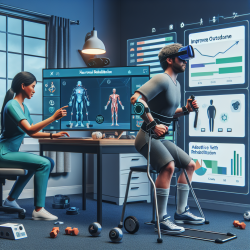Introduction
The rapid evolution of telehealth, particularly during the COVID-19 pandemic, has necessitated a re-evaluation of care delivery models, especially for pediatric patients with complex conditions like cystic fibrosis (CF). A recent study titled "Development of an Interdisciplinary Telehealth Care Model in a Pediatric Cystic Fibrosis Center" provides valuable insights into the successful implementation of a telehealth model in a pediatric setting.
Key Findings from the Study
The research conducted at the Michigan Medicine Pediatric Cystic Fibrosis Center demonstrated the effectiveness of transitioning interdisciplinary care (IDC) to a telehealth format. Key outcomes included:
- Achieving a 100% success rate in IDC virtual visits (VVs) by mid-May 2020, sustained through June 2020.
- Successful agenda setting with patients, ensuring that all visits were coproduced with patients and families.
- High patient satisfaction rates, with 87% of participants being "extremely satisfied" with their telehealth experience.
- An increase in patient portal registration, enhancing communication and access to care.
Implementing Telehealth Models: Practical Steps
For practitioners looking to enhance their telehealth offerings, the study highlights several practical steps:
- Continuous Communication: Maintaining open lines of communication with patients and families is crucial. Utilizing patient portals and regular surveys can help gather feedback and improve service delivery.
- Technology Utilization: Leveraging available technologies, such as secure video conferencing tools and electronic medical records, can streamline care processes and improve patient engagement.
- Quality Improvement (QI) Initiatives: Implementing plan-do-study-act (PDSA) cycles can help address evolving telehealth needs and ensure that care delivery remains patient-centered and effective.
Encouraging Further Research
While the study offers a robust model for telehealth implementation, it also underscores the need for ongoing research. Future studies could explore:
- The long-term impact of telehealth on patient outcomes, such as lung function and overall health status.
- The feasibility of hybrid models that combine telehealth with in-person visits.
- Strategies for overcoming barriers to telehealth access, particularly for underserved populations.
Conclusion
The transition to telehealth in pediatric CF care, as demonstrated by the Michigan Medicine study, offers a blueprint for other healthcare providers. By focusing on continuous communication, technology utilization, and quality improvement, practitioners can enhance care delivery and patient satisfaction.
To read the original research paper, please follow this link: Development of an Interdisciplinary Telehealth Care Model in a Pediatric Cystic Fibrosis Center.










